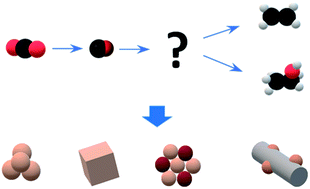Electrochemical CO2 reduction to ethanol: from mechanistic understanding to catalyst design
Abstract
The electrochemical reduction of carbon dioxide (CO2) to chemicals is gaining great attention as a pragmatic solution for greenhouse gas mitigation and for the utilization of CO2 to produce useful fuels and chemical feedstocks using intermittent renewable energy sources. In recent years, strategies to design electrocatalysts for CO2 reduction to ethanol, a valuable liquid fuel, have been increasingly reported. The mechanistic understanding providing insights into steps of the reduction process has allowed for further development of highly efficient and selective catalysts. Several significant breakthroughs have been made; however, the door toward industrial-scale production of ethanol from CO2 is still wide open as most electrocatalytic systems reported so far are still suffering from low energy efficiency, inferior stability, and discouraging selectivity. Inspired by recent advances in the field, we herein provide a review of fundamental and material advances of the electrochemical CO2 reduction to ethanol. First, we discuss the pathways and the effects of reaction-environment factors on the formation of ethanol from both theoretical and spectroscopic points of view. We then give an overview of different strategies to design electrocatalysts for this reaction. Finally, we discuss the remaining challenges and propose promising future research directions, with the aim to bring this technology closer to practical applications.

- This article is part of the themed collection: Journal of Materials Chemistry A Recent Review Articles


 Please wait while we load your content...
Please wait while we load your content...